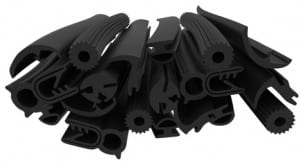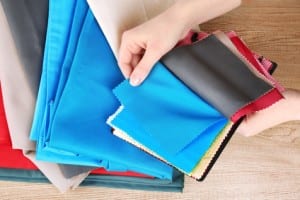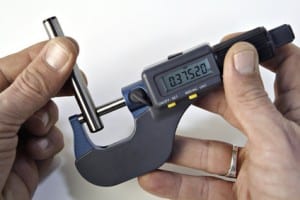 Samples are a standard element in the Hornet Group sourcing process. Every now and again, a client asks us why we need samples from China factories we use. Usually the client is up against a deadline – to save time they want to skip samples and go straight to production. We don’t. Here’s why.
Samples are a standard element in the Hornet Group sourcing process. Every now and again, a client asks us why we need samples from China factories we use. Usually the client is up against a deadline – to save time they want to skip samples and go straight to production. We don’t. Here’s why.
Why do you need samples?
Samples are a key part of managing risk in your sourcing process.
Samples help you get things right before committing to the expense of mass production.
To be clear, sourcing from China doesn’t make the risk of poor quality any higher. There are many reliable suppliers in China and Hornet pride ourselves on finding them. So you can set the price / quality balance at the right point for your business. The only difference with sourcing internationally is that if something does go wrong, it’s harder to resolve. There can be language difficulties. Or time delays. It’s certainly a lot harder to ‘pop round’ and review something over a coffee! So it’s more important than ever to reduce risk.
Samples from China help you confirm that communication is clear. They demonstrate that your supplier knows exactly what you want!
 Photos are not good enough.
Photos are not good enough.
A photo can help identify obvious defects, but it’s a starting point, not a full check. A photo can’t test the strength of a cable or string. It can’t identify that there’s no ‘auto-stop’ on the umbrella to stop it turning inside out.
In fact, the recent Internet debate about that dress demonstrated that a photo can’t even confirm the colour is right!
What about sending samples to China?
This may sound surprising the first time you hear it, but sending a sample to China often makes sense. What about these scenarios?
- You’re looking for a replacement supplier for a product you sell or use already. (Either to cut cost or because your supplier is closing down, or for other reasons.)
- You sell a retro item which is coming back into fashion and want someone to make replicas.
- You service appliances and need spare parts for machinery which the original manufacturer no longer supports.
In these cases you can send a sample which is exactly what you want. It’s a lot easier for the Chinese factory team to study a sample object than to read a specification in English. Of course it is a great idea to include notes with the sample so that they can understand what the key requirements are from your perspective. On the other hand, over 50% of Hornet’s projects include at least some element of custom manufacture. In other words, the factory will not be providing something from their standard product range. They will either be taking a standard product and modifying it, or they will be making something completely new, to your design. In this case, you may not have a sample which is exactly what you want. But you may have something close to it. For custom products, sample notes are essential. You need to indicate what is required and what should be changed.
Who pays for samples from China?
At a minimum, you will have to pay the costs of shipping samples from China to Australia. This is the case even for stock items. If you want a custom item, expect to pay a cost for the sample too. To understand this, consider the supplier’s perspective. Chinese factories are cost-conscious – because their customers are! Samples cost valuable time, effort and materials. This is especially true for custom-made articles. On many occasions, potential clients ask for samples, yet don’t end up placing an order. How can the factory cover the costs of those samples? Also, if they have to ship many samples overseas, the delivery costs can be huge. For the Chinese factory, asking you to pay for samples is a way to confirm that you are truly interested in doing business, not just kicking tyres. All the same, it’s important to keep sample costs as low as possible. Here’s some advice from Hornet.
- Try to confirm your specification before you order samples. Every time you change your mind, you incur extra sample cost.
- There are times when you want to see a sample to decide between different specifications. In this case, get both samples at the same time to save on shipping costs.
- If you’re working with Hornet, remember we assess samples too, before they even get to you. One advantage of having a team in China is a reduced need to ship samples internationally.
Note that if you send samples to China, you will need to pay those shipping costs too. But it’s often the best way to get exactly what you want.
How many samples will I need?
 In most cases, we allow for 2 rounds of samples to get the product that you want. As mentioned above, many of our samples are for custom manufactured items. Samples help uncover gaps in the specification. Also, a sample may be the first time the client sees the product ‘in real life’ – so there are often things they’d like to change. Suppliers come up with suggestions of their own too.) Also note that if you are ordering a range of different but related products from one factory, you should budget for samples of all products. For example, different patterns on baby blankets, or packaging of different sizes or design.
In most cases, we allow for 2 rounds of samples to get the product that you want. As mentioned above, many of our samples are for custom manufactured items. Samples help uncover gaps in the specification. Also, a sample may be the first time the client sees the product ‘in real life’ – so there are often things they’d like to change. Suppliers come up with suggestions of their own too.) Also note that if you are ordering a range of different but related products from one factory, you should budget for samples of all products. For example, different patterns on baby blankets, or packaging of different sizes or design.
What happens after I’m happy with the samples?
Once you’ve approved the sample, it’s time to proceed to placing an order. Quality control hasn’t finished, though. Any changes or modifications made during the sampling process need to be captured and added to the checklist for pre-shipment inspection. It’s also helpful to store photos and notes. The approved sample also needs to be kept in case there are any production issues. In case of any dispute, it’s helpful to be able to compare the pre-production sample with the finished items.
***
Samples may feel like a lot of work, but they’re vital to managing quality and preventing far more serious work and rework. So whatever you do, don’t skimp on the samples!
